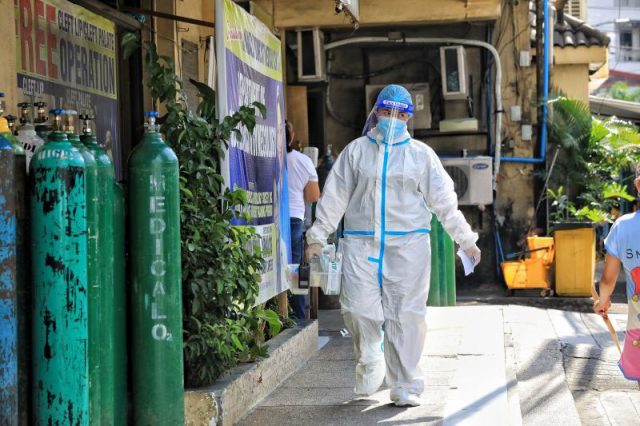
Some members of the medical community criticized the Department of Health for its directive to shorten the quarantine and isolation period of health workers.
The DOH issued this directive last January 8.
“For asymptomatic and fully vaccinated health care workers, isolation and quarantine period may be reduced, not automatically but subject to the careful assessment of the hospital’s infection prevention and control committee or the provincial health office,” it said.
In the new guidelines, the isolation period for positive cases who are asymptomatic or have mild or moderate symptoms was reduced from the current ten days to five days.
On the other hand, quarantine period for close contacts were removed from the previous seven days.
According to DOH, isolation is “for people who have been infected and tested positive for COVID-19.”
Quarantine is “for those who have been exposed and can possibly develop infection.”
The DOH cited the US Centers for Disease Control and Prevention Guidance for Managing Healthcare Personnel with SARS-CoV-2 Infection or Exposure to SARS-CoV-2 as basis for the new protocols.
The duration of the isolation and quarantine period for the general population was retained.
Isolation period for infected individuals will be in effect for ten days or at the advice of the attending doctor.
Exposed individuals, on the other hand, should be quarantined for seven days only if fully vaccinated.
If these individuals are not yet fully vaccinated, their quarantine period will last for 14 days or depending on the advice of their doctors.
DOH also stressed the importance of self-isolation should they experience any symptoms of the highly contagious disease.
“Remember, if with symptoms, isolate immediately. That means, stay in your room/isolation facility, wear your masks at all times, and avoid sharing meals with family,” the health agency said.
“And don’t forget to keep in touch with loved ones through online means,” it added.
‘Unfair to health workers’
The new policy for exposed or infected health care workers was immediately met with criticisms online.
It was perceived “too harsh” and “unfair” for HCWs who are most likely to get sick because of their work.
“Papatayin ata tayong mga HCWs,” a medical technologist said.
“Kasalanan ba naming mga medical frontliner na magkulang ang hanay namin? Tao rin po kami, at bakit magkaiba ang quarantine system ng general public kaysa sa mga medical frontliner? Paki-explain nga po?” a health worker lamented.
Several doctors also asked for scientific proof behind DOH’s new guidelines.
“This is very UNFAIR and openly OFFENSIVE to us healthcare workers. (angry emoji) Bakit pagdating samin may DOUBLE STANDARDS? Why are we being portrayed here as SACRIFICIAL LAMBS on the chopping block? (crying emoji) Mapapatanong ka na talaga kung asan ang BAYANIHAN diyan?” tweeted doctor Harold Henrison Chiu.
“Hindi ito rational o science-based. HCWs are more vulnerable due to their work. Di ba kaya kahanay sila ng elderly at immunocompromised when vaccination started at priority sila sa booster after? Di ba dapat MAS MAY PAG-IINGAT nga lalo para sa kanila? So pano ito naging tama?!” commented doctor Gene Nisperos.
Other concerned Filipinos also pointed out that HCWs who have not recovered from COVID-19 might also transmit the virus to their patients.
“Bakit yung healthcare workers does not get the same length of rest and isolation as the common population? For one, puwede sila lumala. Nakakahiya sa kanila. Pangalawa, puwede din silang makahawa. Pero if CDC approves these guidelines, edi dapat pwede din to everyone?” a Facebook user said.
As of December 10, DOH logged all-time-high COVID-19 cases of 33,169 and 46.0% positivity rate.
This brought the total confirmed COVID-19 cases to 2,998,530, nearing to breach the three million mark.
Of these, there were 2,788,711 recoveries and 52,293 deaths.
The Philippine General Hospital, a COVID-19 referral hospital, announced that it is running in a “crisis mode” after 310 of its health workers or 40% of them have tested positive for COVID-19.









